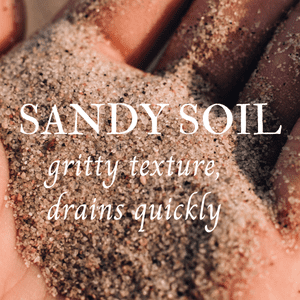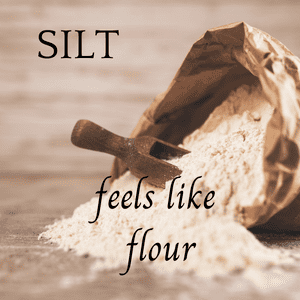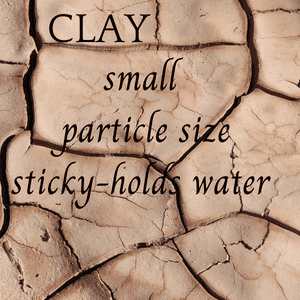“Why Do We Care About Soil Quality?”
If you can learn the secrets of good soil and how to make your own if needed you can produce healthy plants. Healthy plants come from healthy soil, and nothing good happens in the garden without healthy soil. It is one of those situations we see in life in which you can do everything else right, but if the soil does not feed the plants, you will fail. There is no second chance!
What Is “Good Soil”?
“There are more microbes in one teaspoon of soil than there are people on earth”
Soil is filled with microbes, tiny living things that we cannot see. They exist in soil, air, and water. They can make us be healthy or sick depending on how we relate to them and they have a symbiotic relationship with the plants we grow.
Learning the Secrets of Good Soil-What it Looks and Feels Like
Good organic soil is rich in humus. Humus is what happens when organic materials decay. It holds moisture and drains well. It feels loose and fluffy in your hand. That is because it holds air. Look at your soil; good soil is usually dark. Pull up a small plant; the roots should be well spread out, and dirt should crumble off.
If That is Not The Situation -Here’s What To Do To Improve Your Soil
Dig either purchased compost or your own organic material into the soil at least 6″ deep. Go deeper for vegetables and large plants. In the fall, dig in leaves and healthy plant material. Damaged material should always be destroyed. If I am doing my morning “coffee cup” inspection of the garden and I remove unhealthy looking foliage- I need to ensure, that the damaged material never gets back into the soil.
What Kinds Of Soil Will I See in My Garden?
There are three main types of soil and they are often found in combination. Moving into our South Florida house, we found the typical local soil. Sand and lime rock. No nutrition at all, and plants between the rocks slid about in the rain. Not too appetizing! Your soil may be one of these three or some combination. It is good to know what you have before you start to improve it.
Sandy Soil And How To Improve It

Sandy soil is made of rounded particles, so water drains through quickly. How do I know if my soil is sandy? Look at the ground soon after rainfall; normally, water will be visible. If not, it is sandy. Pick up a handful and try to make a ball. If you cannot do that, the soil is sandy.
Sandy soil has some virtues, it is easy to move and drains well. Sandy soils warm up faster in the spring and new plants take root more quickly. The bad part about sand is that it does not hold nutrients or water when needed. Sandy soil is a platform, not a meal.
Adding organic material will make the greatest improvement. Amend the soil before you plant and add some new material each year. The compost, when added to sandy soil breaks down quickly. In such soil, you can use compost with larger pieces that may last longer.
Sometimes a large amount of soil amendment, applied at one-time can reduce nitrogen to below-needed levels. You may need additional fertilizer. A sign of nitrogen loss is yellowing foliage.
In sandy soil water less frequently and for a longer time. When planting in sandy soil mulch is important. Add three inches and keep mulch on to retain moisture.
Silt And How To Improve It

Silt is in the middle. It is very fine and in your hand, it feels like flour.
Add water and it feels slick. It holds water a little better than sand does. The Particles are a little flatter and stick together a little more. This should be fertile soil and will have a problem with compaction. Add organic matter. Here is the tricky part, avoid over-tilling and walking on the soil bed. The added organic matter will help with that problem.
Clay Soil And How To Improve It

Clay soil is usually reddish in color. It clumps and sticks together and on your shoes. Clay soil is made of tiny plate-like particles that stick together. If you dig in it, you know it is clay.
It has its purposes, clay soil holds nutrients, it is fertile. There are lots of varieties of clay. A soil test is well worth doing. The problems are that it is heavy and hard to move. Clay keeps needed air from the plant roots and as it retains nutrients it also retains salt.
Amend the soil with material such as compost, straw, fine wood particles, and peat moss. This will lighten the soil, allow air, and keep water draining. This is heavy work. You will, very likely, need to work in stages. As you add new plants you can amend each area. The soil at our present house is Florida sand and lime rocks. It was easier to handle than clay but it took a while.
Water is a challenge, you will water less frequently. Watch for standing water and hold back the hose. A thick layer of coarse mulch will slow down water runoff, the mulch will keep the soil cool and reduce weed seeds.
Test Your Soil-To Learn its Secrets
A simple test will measure the fertility and health of your soil. Additionally, it will measure the pH of your soil and identify any nutritional deficiencies.
Most nutrients are found in soil when its pH level is between 6-6.5. Its extremes can damage plants. With a soil test, you will not over-fertilize or waste money on products you don’t need.
How To Find A Soil Testing Service
Your county extension service will offer low-cost, expert testing. Call them, they will provide a test kit and sampling instructions that are easy to follow.
I have done this. I have taken the samples and done very basic testing. We volunteer Master Gardeners are trained to do. It is just for pH. If I can do it you can.
The more complete test will usually be performed by your state university or a local testing lab. Local is important in soil testing. Your local lab will be set up to test for issues important in your area. If you do not know how to reach your local Extension Service here is how to look them up.
What To Expect From Your Soil Test Results
Your report will contain detailed charts with important information on the status of your soil. Look for these elements:
- Test for organic material-a high amount is most productive.
- pH this number will tell you how acidic or alkaline your soil is, A level of 7 is neutral, under 7 is acidic, over 7 is alkaline. Your goal for most garden plants is between 6.3-7.3.
- CEC-represents Cation Exchange Capacity and is a measure of how your soil holds nutrients. Values of 15-20 indicate good holding of nutrition. A level below 6 usually indicates a need for management.
- Macronutrient levels. Phosphorus (P) for transfer of energy, flower and fruit formation. Nitrogen (N) not always included. Potassium (K) for growth of stalks and stems, and the ability to move water within the plant
- Some tests will include micronutrients.
When Should I Test My Soil
Fall is the ideal time for many gardeners, it can become part of the general fall clean-up chores. However, you can test your soil anytime. If you have a new garden, are making changes, or notice changes in your soil or plants, it is a good time to test.
What About The Soil in My Container Gardens?
The best soil for container plants is lightweight, has superior drainage and is filled with nutrition. The best of it is often not even soil. For more help on potting soil try this: ‘The Secrets of Potting Soil.’
Some Useful Definitions
These are words you will see often in soil discussions. The definitions may be helpful.
Loam
Loam-soil, made primarily of sand, about 40%, silt, 40%, and clay, 20%. This is the goal. It has more humus, holds moisture and nutrients, has good drainage, better water, and air infiltration, and is a habitat for microorganisms.
Soil Amendment
Soil amendment materials we add to improve the soil’s physical properties,
Tillage
Tillage- this is you, manipulating the soil to make conditions beneficial to plant growth.
Tilth
Tilth is the physical condition that you create by tilling.
Keeping The Soil Healthy
It is possible to destroy all of your good work in one season. Here are some good maintenance ideas for ongoing soil health.
- Each year add about 2″ of organic matter any time but in the fall is often easy. In most climates, this is when you are raking leaves.
- Look for low places where water sits which is negative to plantings. Find the lowest place where the water sits and then see where it slowly drains to. You may need to dig a trench and install a perforated drainpipe from one to the other to facilitate drainage.
- Plant roots need space to grow, do not walk or drag equipment over wet areas. This will compact the soil and eliminate space the roots need.
- Fertilize thoughtfully, read the instructions to avoid overfertilizing. Don’t fertilize when you expect heavy rain and keep fertilizer away from hardscape.
- When it is time to till, avoid doing this when the soil is wet.
Soil Is Variable- Even Within Your Garden
Soil is very different depending on where you live. The soil will differ even within parts of your garden. Climate, soil materials, and the age of the soil affect your garden. If you live, as I did in an area with granite rock (magma hardened under the earth); your soil will be very different than that of areas with shale (old compressed seabed sediment).
Where To Get Advice
Your soil is defined by two things, what it is built on and how you manage it. This does lead me to believe that the best advice is local advice. People like me appreciate it when you take the time to read our best ideas and research. I do, however, also, think that you are wise to employ your best and most local thinking in your garden. The best growers, the most successful real local garden center, and your own university agricultural system. The best way to access them is through your county extension system. Also, use your nearest botanical garden. Get on their mailing list if going to them is not convenient,
Summary,
If you would like to read more about soil this is the site for the Soil Science Society You may like it.
Just remember what Cicero said.
“If you have a garden and a library, you have everything you need”
-Marcus Tullius Cicero
‘Resources You Can Use.”
“How To Find A Low Maintenance Ground Cover The Rabbits Won’t Love.’
